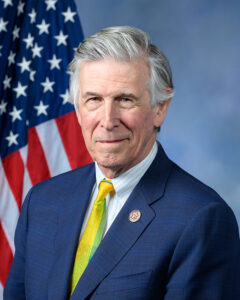
There’s been a massive change in how the world views gender and sexual expression throughout the past century. Most of the credit goes to the LGBTQ individuals, but gender therapists are unsung heroes in this community as they have helped clients learn to navigate the nuances in their personal lives and brave public judgment while becoming assertive in their identity.
“One challenge is having workplace, friends and family understand and accept who [these LGBTQ individuals] are,” Anne Rafal, a Falls Church-based therapist who works with LGBTQ teens and adults, said. “That can take time. It’s hard for people who have come to that decision to have to bide their time while others come to terms with it.”
Rafal, along with fellow Falls Church-based gender therapists Carolyn Dozier and John Thomas, are a crucial part of the support system that makes a former population of outcasts comfortable in society’s mainstream as well as existing in their own skin.
Open acceptance of LGBTQ people has ebbed and flowed throughout history. Khnumhotep and Niankhkhnum were royal servants in ancient Egypt and were believed to be the first-ever recorded same-sex couple. Homosexuality wasn’t taboo in Ancient Greece and other regions, such as 16th century Angola. Native Americans had flexible views on what constituted “normal” for a given gender.
In short, LBGTQ communities have always existed, but how the broader culture received those communities has been inconsistent at best. The 21st century has seen a surge of evolution and support for LGBTQ populations.
The major distinction coming from this most recent wave is the distinctions between sex (the biological reality of being a man or woman) and gender (the sex-based behavior that someone prefers). An example would be a girl who’s more masculine in gender, such as a “tomboy,” but who also identifies as a woman and has no confusion over her sex.
Rafal noted that, according to a recent study, 12 percent of the U.S. population is LGBTQ, with 20 percent of the millennial population identifying as such. More progressive areas, such as the City of Falls Church, have taken steps to ensure that gender-nonconforming individuals don’t feel out of a place.
“We live in a pretty good area in terms of providing accommodations and recognizing that gender expansive people have options,” Thomas said.
Still, the journeys that Thomas, Rafal and Dozier help their clients on is never easy.
Dozier, who spoke with the News-Press in 2018, said that her adult lesbian, gay and, in particular, transgender clients possess a litany of scars from a lifetime of experiencing homophobia.
Working through that trauma can be especially difficult when the homophobia comes from family members. Dozier describes it as a unique situation among minority groups, since, for example, disabled or racial minorities typically have a refuge from prejudicial treatment inside their homes. It’s often the opposite for LGBTQ individuals, and Dozier highlights how being rejected by one’s family damages the primal instinct humans generally have to connect with their tribe.

Those wounds can spiral into other afflictions. Many clients from all three therapists struggle with either depression, anxiety, substance abuse or other self-harming behaviors, such as cutting themselves. For Rafal’s clients who are gender nonconforming — those who don’t fit neatly into the male or female category — instances such as loved ones misusing pronouns or referring to their “dead name” (the name given at birth that they no longer identify with) can disrupt the client’s homeostasis with their preferred identity. On the flip side, Rafal said that with family and friends who are supportive of a client’s treatment generally don’t cause the depression and other negative behaviors with the same severity or frequency.
It’s why all three practitioners take a gender-affirming approach. When gender therapy was relatively new, therapists would often employ what was called “gatekeeping” to assess clients. Essentially, gatekeeping was a therapist seeing how devoted a client was to their personal transformation. So they would task clients with dressing or behaving as their preferred sex for a certain amount of time before agreeing that it was a legitimate part of their being and not a temporary lifestyle choice.
Gatekeeping is now seen as degrading to a LGBTQ person’s sense of self, hence why gender-affirming approach became the new norm. With gender-affirming, therapists don’t question how sincere a client is in their feelings about their identity. At the same time, they also don’t affirm every belief a client has. Both Dozier and Rafal emphasize that pointing out inconsistencies in a client’s thoughts and breaking down how the tension in those beliefs came about is a core part of gender therapy.
For Thomas, who primarily works with youths between the ages of 11 – 25 experiencing gender dysphoria or gender nonconforming tendencies, clients who are minors and could also undergo medical treatment adds extra layers to the therapy process.
Sticking with the gender-affirming approach, Thomas takes his younger clients at their word that they may be gender-noncomforming or outright transgender. He often allows clients to dress as their preferred sex to facilitate therapy sessions, and typically knows after a few meetings whether a client is a potential candidate for medicinal components such as hormone therapy or puberty blockers. As Thomas described it, “Children are the ones driving this field since they don’t have the amount of shame and trauma to work through as adult [clients] do.”
Considering the plethora of age-related barriers in society — the ability to drive, vote or join the armed forces, to name a few — it seems counterintuitive to allow children to dictate a monumental decision such as altering their body in likely permanent ways. The long term effects of puberty blockers are infertility, compromised bone development and undetermined effects on brain development. In terms of hormone therapy, long term effects are largely unknown.
While Thomas mentions that parental consent is necessary, he also clarifies that time to digest such a decision is baked into the therapy cake. It allows him to make an informed choice about the route a young client should commit to.
“I tell parents, ‘I don’t have a dog in the fight,’ because I really don’t. I don’t have an emotional, activist mentality with this,” Thomas said. “As a parent myself, I tell them ‘I know how scary this is. You don’t want to make a mistake that’s going to make them infertile or change their body.’ I also totally empathize with the children, because it’s their narrative. If they have felt their way most of their lives, we notice from empirical evidence, they’re almost always going to feel this way.”
During his treatment, Thomas strives to balance between what is safe medically and what is authentic to the child’s own state of being. He avoids rubber stamping children and sending them to an endocrinologist, but he also doesn’t try to impede the next steps if he believes a child’s identity is firm.
It’s a delicate equilibrium to maintain, but after 20 years in the field Thomas hasn’t seen many clients — whether adults or children — who decide to go back on their medicinal treatment once they’ve chosen to do so. He’s currently part of a team of researchers that is looking into brain patterns and how those can be used to identify sexual and gender preferences earlier in life.











